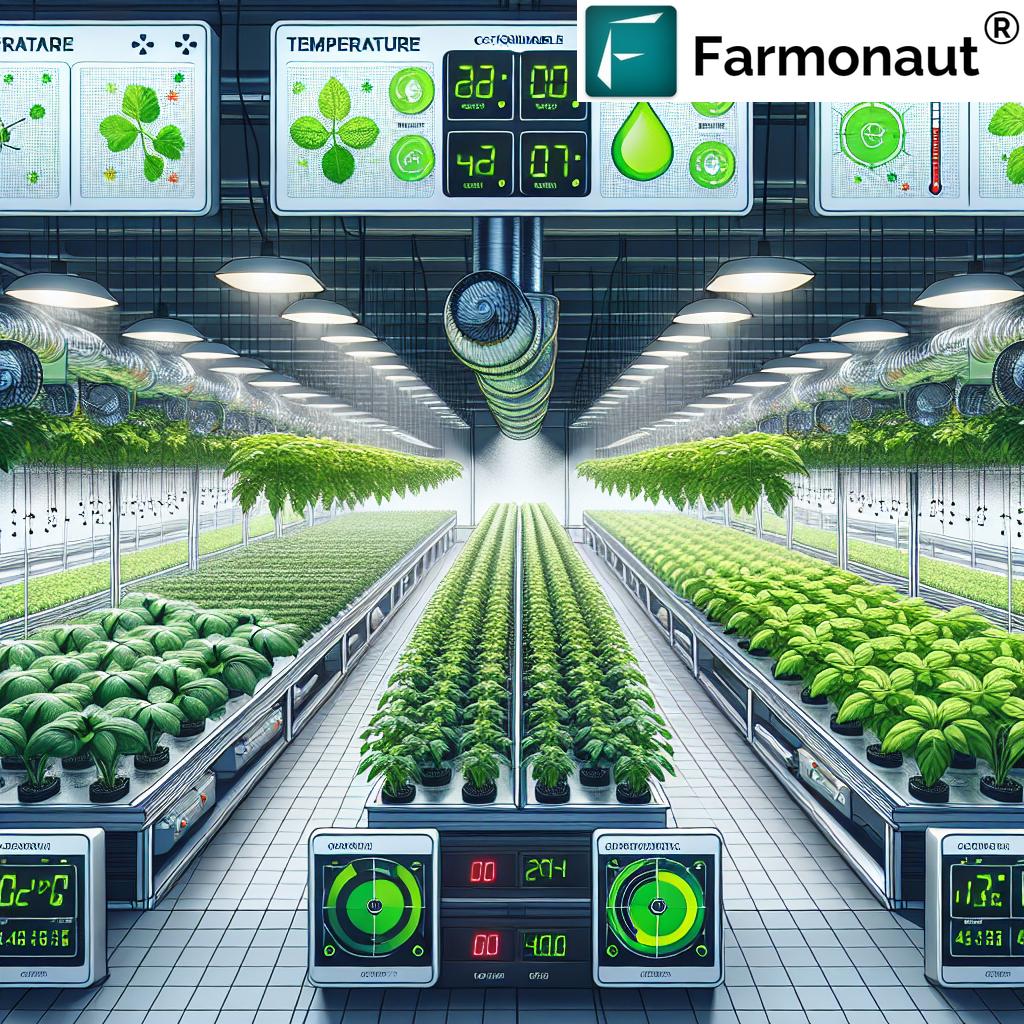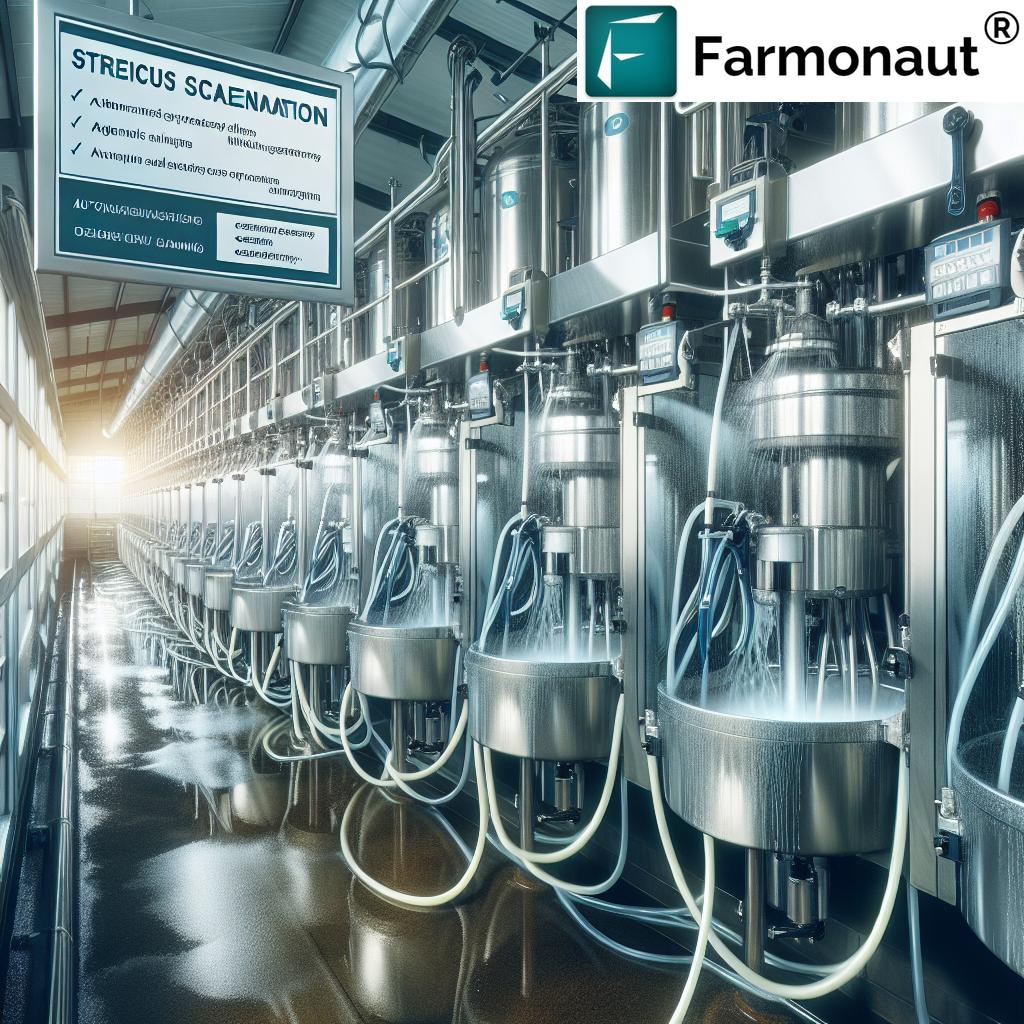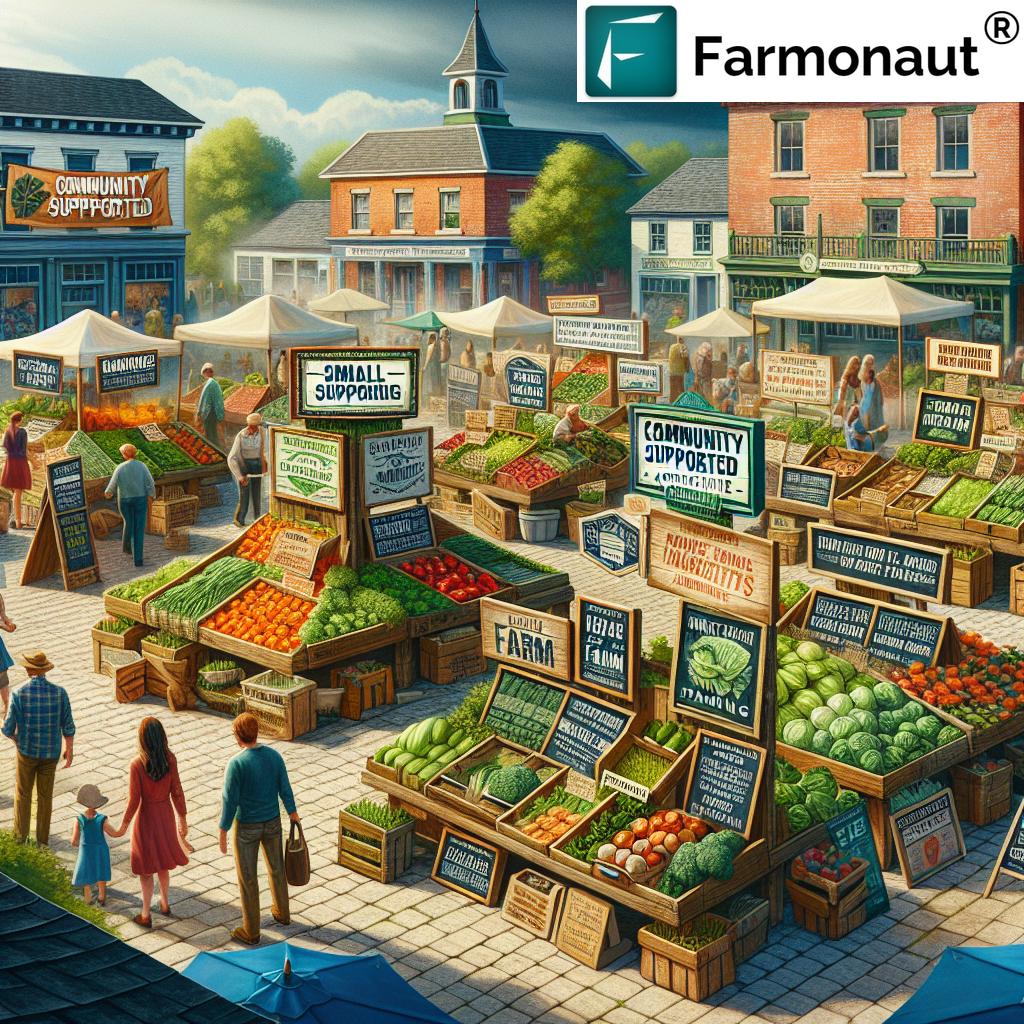Table of Contents
- Introduction: Best Horticulture Farming 2026
- Understanding Horticulture and Its Importance
- Horticulture Technology Trivia
- 2026 Horticulture Farming Trends & Best Practices
- Comparative Innovations Overview Table
- Key Horticultural Technologies and Practices
- Sustainability & Environmental Impacts in The Horticulture Sector
- Economic Opportunities & Social Dimensions of Horticulture
- 2026 Challenges in Horticulture Farming
- Farmonaut’s Role in Future Horticulture Innovations
- Frequently Asked Questions (FAQ)
- Farmonaut Subscription Table
- Conclusion
Best Horticulture Farming 2026: Innovations & Practices
The best horticulture farming practices are rapidly evolving in 2026, driven by technology, sustainability, and market demands. As the horticulture sector merges advanced science with innovative techniques, farmers, agricultural experts, and enterprises all over the world are witnessing transformative changes in how fruits, vegetables, ornamental plants, and exotic crops are produced and managed.
“By 2025, global horticulture technology investments are projected to surpass $30 billion, driving rapid innovation and efficiency.”
The Future of Horticulture Farming: Innovations and Opportunities in 2026
As horticulture farming approaches 2026, it stands as a pivotal sector in global agriculture. This article explores the contemporary trends, innovations, and challenges in horticulture farming, emphasizing its critical role in food security, rural development, and environmental sustainability. Key focus areas include technology in best horticulture, new horticulture crop development, sustainable farming practices, and how platforms like Farmonaut are supporting the transformation.
Horticulture is more than growing plants—it’s about cultivating a sustainable future. Let’s delve into the best horticulture practices and cutting-edge techniques making waves in 2026.
Understanding Horticulture And Its Importance
Horticulture encompasses the specialized cultivation of fruits, vegetables, flowers, spices, medicinal plants, and ornamental varieties. This sector is distinct from traditional agriculture, which may focus on staple grains, by prioritizing high-value, often perishable, crops that require intensive care and specialized knowledge.
The importance of horticulture sector is multifaceted:
- Nutrition: Horticulture crops are rich in vitamins, minerals, antioxidants, and dietary fiber—vital for health.
- Economic Value: High value per unit area makes best horticulture farming highly profitable and resilient against market volatility.
- Diversity: The sector contributes to dietary diversity and supports global food security.
- Employment: It provides considerable rural employment, especially for women and smallholders.
- Climate Resilience: Horticulture crops can be diversified in various regions, improving adaptation to environmental changes.
Access to modern cultivation practices and technological breakthroughs has catalyzed the rapid growth of the horticulture sector worldwide.
The concept of red horticulture—referring to strawberries, cherries, pomegranates, and similar high-value red fruits—exemplifies niche, premium market opportunities within the horticulture crop sector.
Horticulture Technology Trivia
“Over 60% of horticulture farms worldwide are expected to adopt AI-powered crop monitoring by 2026.”
2026 Horticulture Farming Trends & Best Horticulture Practices
The year 2026 is witnessing a shift from traditional to modern horticulture farming, driven by cross-disciplinary innovations in technology, environmental sustainability, and market-oriented cultivation.
Some of the most impactful trends include:
- Precision Farming: The wide adoption of sensors, drones, satellite imaging, and data analytics to monitor crop health, optimize water and fertilizer inputs, and detect pests.
- Climate-Resilient Crops: Advanced breeding and gene-editing to develop horticulture crop varieties that withstand drought, salinity, and diseases.
- Controlled Environment Agriculture (CEA): Greenhouses, hydroponics, and vertical farms for intensive care and off-season production of premium crops.
- Integrated Pest Management (IPM): Combines biological, cultural, and chemical methods for pest control to minimize inputs and promote sustainable practices.
-
Blockchain and Traceability: Technology for farm-to-fork transparency and authenticity, especially in organic and export markets.
Learn about Farmonaut’s blockchain-powered product traceability solutions for horticulture export crops. - AI-Based Advisory: Sophisticated AI tools provide real-time crop insights, resource management advice, and customized solutions for small and large farms.
Comparative Innovations Overview Table: Best Horticulture Technologies 2026
| Innovation/Technology | Estimated Adoption Rate in 2025 (%) | Primary Benefits | Estimated Yield Improvement (%) | Sustainability Impact | Example Crops/Applications |
|---|---|---|---|---|---|
| Precision Irrigation & Drip Systems | 60 | Reduces water use, prevents overwatering, enhances nutrient delivery | 20–35 | Very High – conserves water | Fruits (pomegranates, strawberries), vegetables |
| AI-Driven Crop Monitoring | 62 | Real-time plant health detection, pest/disease prediction, resource optimization | 15–26 | High – reduces chemical inputs, improves efficiency | Red horticulture, vegetables, plantation crops |
| Vertical Farming & Hydroponics | 37 | Maximizes space (esp. in urban horticulture), consistent production, water-efficient | 30–45 | Very High – land and water savings | Leafy greens, herbs, exotic vegetables |
| Biodegradable Mulching Films | 24 | Reduces weeds, conserves soil moisture, eco-friendly residue | 10–18 | High – decreases plastic pollution | Field vegetables, strawberries, melon |
| Advanced Greenhouse Systems | 54 | Year-round, climate-controlled production of high-value crops | 28–40 | High – resource efficiency | Flowers, exotic fruits, tomatoes |
| Blockchain Traceability Platforms | 31 | End-to-end product authenticity, market access, transparency | 5–12 | Moderate – improves consumer trust, exportability | Organic/premium fruits, export vegetables |
| Integrated Pest Management (IPM) | 73 | Reduces pesticide use, protects beneficial organisms, improves crop safety | 14–22 | High – biodiversity, lower residues | Fruits, vegetables, spices |
| Remote Sensing & Satellite Monitoring | 53 | Field-scale analysis, early detection of crop stress/disease, large-farm management | 17–27 | High – precision management, lower waste | All horticulture sectors (large-scale, premium) |
Key Horticultural Technologies and Best Horticulture Practices of 2026
Let us explore how technologies are revolutionizing horticulture and shaping the best horticulture practices in 2026.
-
Precision Agriculture for Horticulture
Using data from satellites, drones, sensors, and AI, farmers optimize every input for each plant, boosting yields and reducing costs. Technologies like satellite monitoring help sense soil moisture, crop nutrient levels, and disease early.
Farmonaut’s satellite monitoring platform delivers actionable horticulture crop insights to empower real-time management for both small and large-scale farms.

Try Farmonaut’s App for Real-time Horticulture Crop Monitoring! -
AI and Machine Learning in Best Horticulture Management
With advanced AI and machine learning algorithms, platforms can analyze vast datasets to detect disease risks, predict irrigation needs, and recommend interventions, reducing waste and enhancing quality.
Farmonaut’s Jeevn AI Advisory System transforms horticulture farming with dynamic advice and real-time data analysis. -
Remote Sensing and Satellite Imagery
Multispectral imagery reveals hidden plant stress, nutrient deficiencies, and even helps estimate yields remotely. Large estates and small farms alike benefit from scalable, affordable insights.
Learn how Farmonaut’s API and web platform make this tech accessible for every size of operation.

Download the Farmonaut Android app

Get Farmonaut on iOS -
Integrated Pest Management (IPM) & Biological Controls
IPM integrates cultural, biological, and chemical strategies—minimizing harmful pesticide use while protecting beneficial species and supporting soil health. Digital scouting and predictive models streamline pest detection in horticulture crops. -
Vertical Farming, Greenhouses & CEA
Urban regions are rapidly adopting vertical farming for year-round, resource-efficient production. Climate-controlled greenhouses, using AI and sensors, increase yield of premium fruits, flowers, and exotic vegetables, regardless of external weather. -
Blockchain Traceability
Blockchain ensures the authenticity of organic, premium horticulture products. Farmonaut’s blockchain-based traceability product secures the journey of fresh produce from farm to consumer. -
Fleet and Resource Management in Modern Horticulture
Managing harvesting, irrigation, and logistics is streamlined with satellite-driven fleet management tools.
Explore Farmonaut’s fleet optimization system—reduce costs, minimize downtime, and maximize horticulture crop delivery efficiency.
Sustainability & Environmental Impacts in The Horticulture Sector
In 2026, sustainability is not optional—it’s the foundation of best horticulture farming. Horticulture crop management now emphasizes:
-
Water Management and Drip Irrigation
With drought and resource scarcity impacting all regions, drip and precision irrigation have become mainstream, especially for red horticulture and other high-value crops.
Farmonaut’s satellite platform helps farmers monitor soil moisture and schedule watering to prevent waste. -
Organic and Biological Solutions
Farmers are adopting biofertilizers and organic compost to improve soil health, encourage beneficial microbes, and reduce synthetic inputs.
See how regenerative methods are transforming soil and carbon management:
Farmonaut’s carbon footprinting tools for horticulture growers
-
Agroforestry and Biodiversity
Intercropping and integrating trees into horticulture systems increases resilience and environmental benefits—locking carbon, improving microclimates, and supporting pollinators. -
Crop Rotation & Cover Cropping
These practices break pest cycles, improve soil fertility, and reduce the need for synthetic chemicals—supporting food security and environmental sustainability.
Economic Opportunities & Social Dimensions of Best Horticulture Farming
The horticulture sector contributes significantly to rural livelihoods, job creation, and national economies in 2026. Key economic and social factors include:
- Premium and Niche Markets: The rise of red horticulture (e.g., strawberries, pomegranates, cherries) and exotic crops provides lucrative, niche markets for farmers with a focus on branding and quality.
- Export Growth: Rapid improvement in cold-chain infrastructure and blockchain-enabled traceability expand access to international markets for high-value horticulture crops.
- Income Diversification: Horticulture, unlike traditional grain farming, offers multiple harvests per year and reduces dependency on single-crop volatility.
- Socio-Economic Empowerment: Women and smallholder farmers benefit from the high labor intensity and flexible entry points of horticulture farming.
- Access to Finance: Reliable, tech-driven crop data enables access to crop loan and insurance products for horticulture farmers, offering greater financial security and risk management.
- Farmer Producer Organizations (FPOs): The rise of FPOs and cooperatives empowers producers to access markets, input supplies, and bargaining power.
2026 Challenges in Horticulture Farming
Despite promising prospects for the best horticulture farming, several challenges persist:
- Climate Change: Evolving weather patterns, droughts, and heat stress require constant adaptation and new, climate-resilient horticulture crops.
- Land Fragmentation: Many farms operate on small, divided plots, making investment in advanced technology a challenge for individual farmers.
- Skill Gaps: There is often a shortage of specialized knowledge and technical capacity at the grassroots level.
- Limited Infrastructure: Rural logistics, cold storage, and processing facilities are still underdeveloped in some regions, causing post-harvest losses.
- Financing and Market Access: Not all smallholders have reliable access to financial services, appropriate insurance, or modern marketing platforms.
- Regulatory and Policy Barriers: Regulatory hurdles can slow down the adoption of biotech, precision agriculture, and export market access.
Addressing these challenges requires collective action, institutional investment, and the development of scalable digital infrastructure for global agriculture.
Farmonaut’s Role in Future Horticulture Innovations
As a satellite technology leader, we at Farmonaut are dedicated to making advanced horticulture crop monitoring and management affordable and accessible to all. Here’s what sets our platform apart for the future of best horticulture farming:
-
Satellite-based Crop Health Monitoring:
Our platform provides real-time insights on vegetation health (NDVI, EVI), moisture status, and crop stress.
APIs are available for direct integration with farm management systems.
Explore our Farmonaut API for horticulture and API Developer Documentation. - AI-Driven Advisory: Our Jeevn AI advisory system provides actionable, on-demand guidance for best horticulture practices, climate risk solutions, and input management tailored for regional and crop-specific challenges.
-
Blockchain Traceability: Ensuring product authenticity and safety for the growing global demand for organic and premium red horticulture products.
Learn more about Farmonaut blockchain traceability -
Fleet & Resource Optimization: We offer tools for efficiently managing agricultural machinery, logistics, and inputs, ensuring timely delivery of fresh horticulture crops to markets.
See our Fleet Management Solutions -
Environmental Impact Tracking: Measuring and reducing carbon footprints for sustainable horticulture development.
See Farmonaut’s carbon footprinting service -
Large Scale and Forest Advisory:
Supporting plantation and forest-based horticulture through robust monitoring and management tools.
Discover our Large Scale Farm & Forest Advisory Platform

Access Farmonaut: Satellite-Based Monitoring App

Farmonaut on Google Play

Farmonaut on the AppStore
We are committed to democratizing data, empowering decision-makers, and promoting transparent, sustainable best horticulture farming worldwide—across every crop, region, and farm size.
Frequently Asked Questions (FAQ): Best Horticulture Farming 2026
The most profitable horticulture crops in 2026 include premium red fruits (strawberries, pomegranates, cherries), exotic vegetables, high-value flowers, and organic spices. Urban and peri-urban regions see rapid growth in vertical farming of leafy greens and herbs.
Q2. How does satellite technology help improve horticulture farming efficiency?
Satellite technology enables real-time crop monitoring, remote sensing of soil and plant health, and precision input management, resulting in increased yields, resource efficiency, and early stress detection for best horticulture outcomes.
Q3. Why is blockchain important in horticulture supply chains?
Blockchain ensures transparency, product authenticity, and safer exports, building consumer trust—especially vital for organic and premium horticultural products.
Q4. What steps should new farmers take to enter horticulture farming in 2026?
Start with soil and market analysis, select suitable high-value crops, leverage digital tools and advisory platforms like Farmonaut, and join farmer cooperatives to access quality inputs and markets.
Q5. How does AI-based advisory differ from traditional extension services?
AI tools like Farmonaut’s Jeevn AI provide instant, data-driven recommendations customized for each plot, climate, and crop—far more responsive and personalized than traditional time-lagged advice.
Farmonaut Subscription Options
Conclusion: Best Horticulture Farming 2026
Best horticulture farming in 2026 brings together science-led innovation, environmental responsibility, and dynamic economic growth. From precision horticulture crop cultivation to blockchain-enhanced traceability, the sector is experiencing a paradigm shift. As global food security, nutrition, and sustainability take center stage, the horticulture sector’s contributions become ever more critical.
By embracing AI, satellite technology, advanced greenhouse management, and sustainable practices, farmers and enterprises can realize higher yields, lower inputs, and assured market access—while ensuring long-term planetary health. Farmonaut’s commitment to democratizing technology, providing real-time crop analytics, and supporting sustainable agriculture is set to catalyze the next wave of growth for horticulture globally.
The future of horticulture farming is intelligent, sustainable, and highly connected—are you ready to grow with it?







